Vertical Parabolas: Standard Form (aka Vertex Form)
State Standard 9.0
Students demonstrate and explain the effect that changing a coefficient has on
the graph of quadratic functions; that is, students can determine how the graph
of a parabola changes as a, b, and c vary in the equation y = a(x-b)2+
c.
Note: The state
standard uses "b" instead of "h", and "c" instead of "k". Standard Form (Vertex
Form) is listed below:
y = a (x - h)2 + k
|
If " a" is positive the parabola opens up
and has a minimum value, which is the "y" value of the vertex or what we
are calling "k".
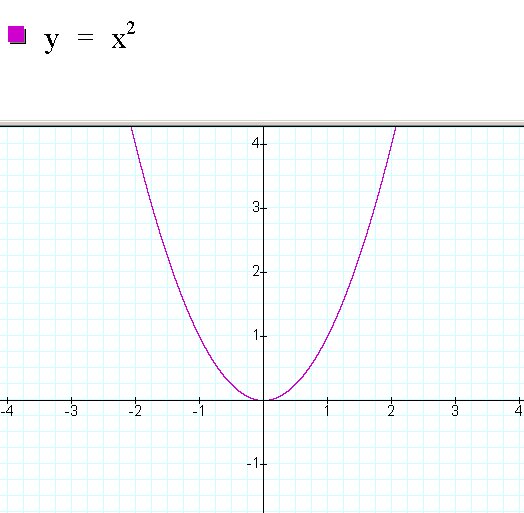
|
|
If " a" is negative the parabola opens down
and has a maximum value, which is the "y" value of the vertex or what we
are calling "k".
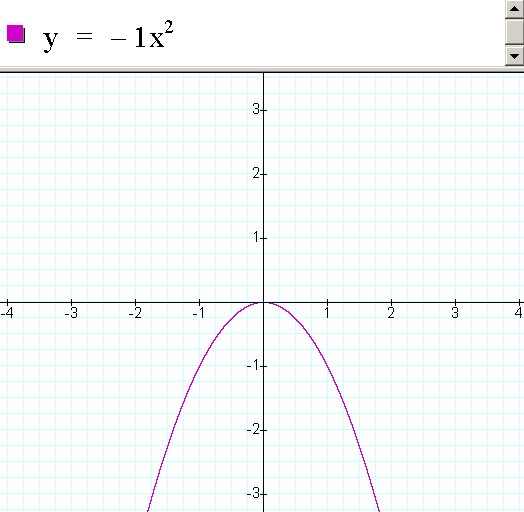
|
|
The absolute value of "a"
determines the width of the parabola.
|a| = 1; normal width
|a| > 1; narrow width (vertical stretch)
|a| < 1; wider width (vertical shrink)
|
|
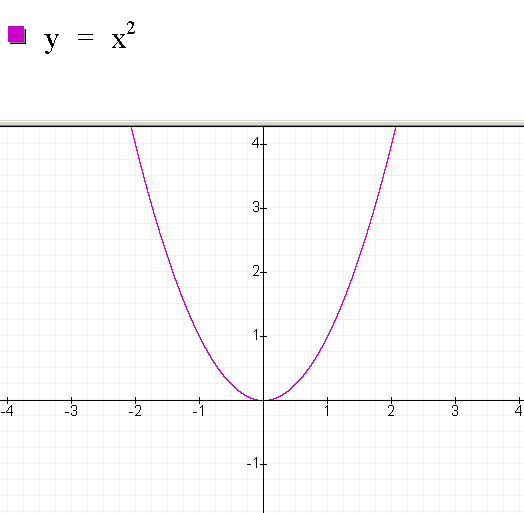
|
|
|
The vertex is (h, k), and the axis of symmetry is the
equation: x = h
Changing the value of "h" and/or "k"
creates a "Slide Translation" from Geometry.
|
| The value "h" is the
opposite of the number in parentheses and determines the x
value of the vertex as shown below.
Changing the value of "h" results in a
horizontal translation as seen below. |
|
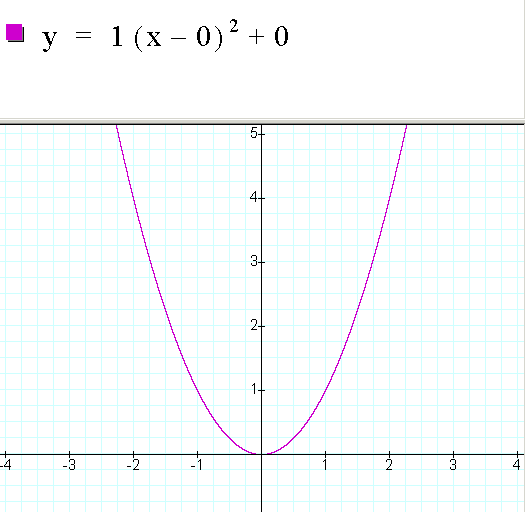
|
|
| The value "k" is the
same as the number behind the parentheses and determines the y
value of the vertex as shown below.
Changing the value of "k" results in a
vertical translation as seen below. |
|
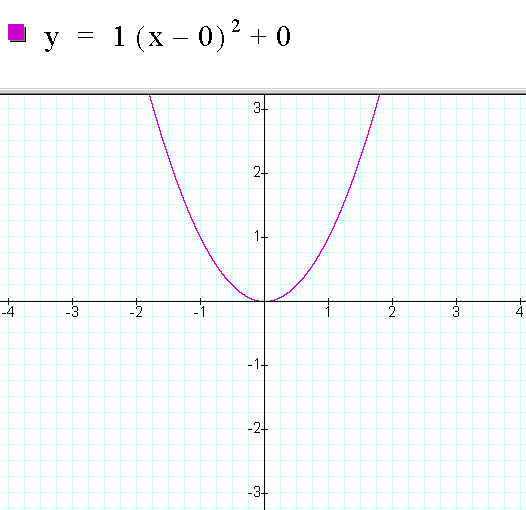
|
|
|

![]()